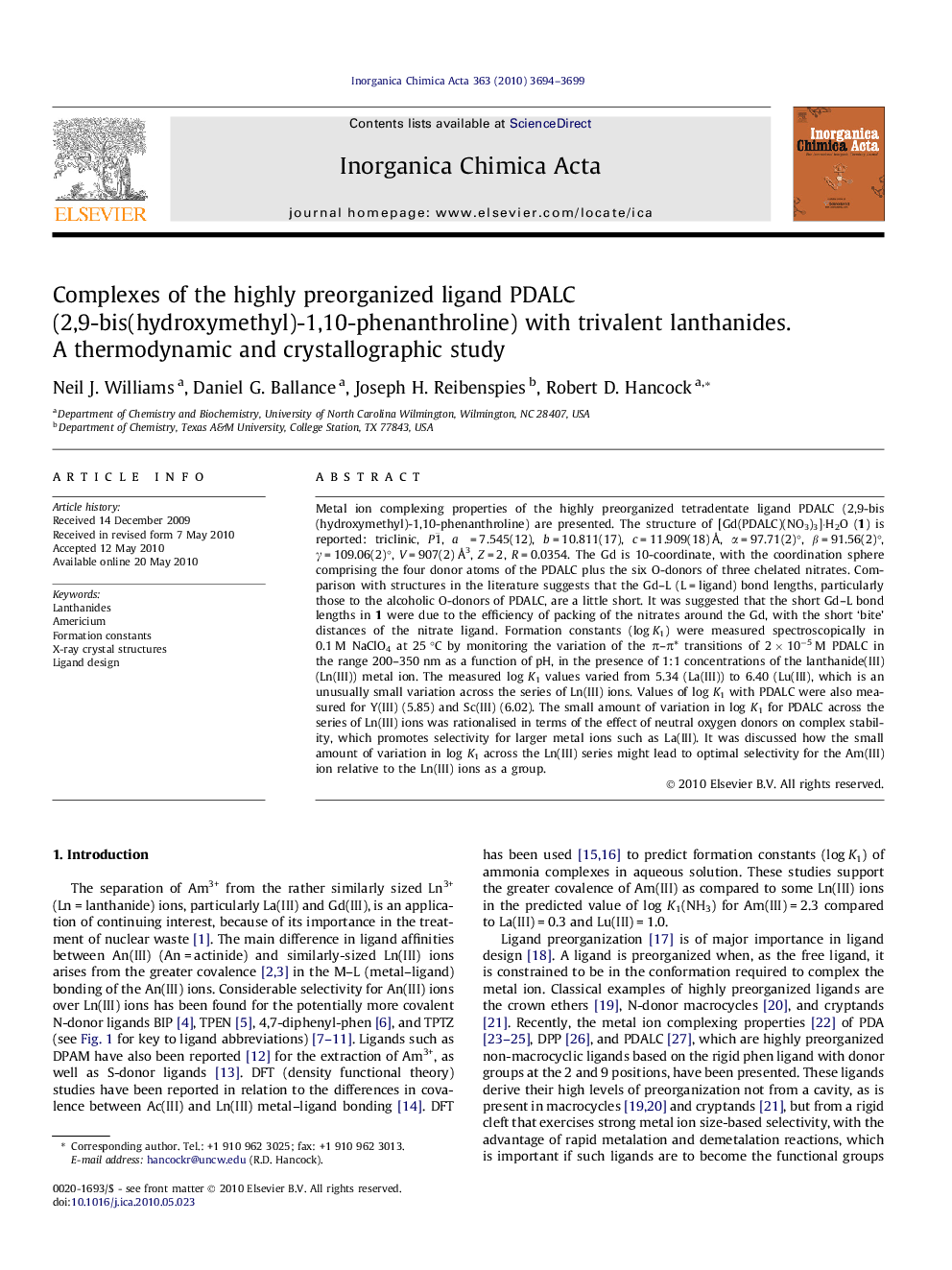| Article ID | Journal | Published Year | Pages | File Type |
|---|---|---|---|---|
| 1307837 | Inorganica Chimica Acta | 2010 | 6 Pages |
Metal ion complexing properties of the highly preorganized tetradentate ligand PDALC (2,9-bis(hydroxymethyl)-1,10-phenanthroline) are presented. The structure of [Gd(PDALC)(NO3)3]·H2O (1) is reported: triclinic, P1¯, a = 7.545(12), b = 10.811(17), c = 11.909(18) Å, α = 97.71(2)°, β = 91.56(2)°, γ = 109.06(2)°, V = 907(2) Å3, Z = 2, R = 0.0354. The Gd is 10-coordinate, with the coordination sphere comprising the four donor atoms of the PDALC plus the six O-donors of three chelated nitrates. Comparison with structures in the literature suggests that the Gd–L (L = ligand) bond lengths, particularly those to the alcoholic O-donors of PDALC, are a little short. It was suggested that the short Gd–L bond lengths in 1 were due to the efficiency of packing of the nitrates around the Gd, with the short ‘bite’ distances of the nitrate ligand. Formation constants (log K1) were measured spectroscopically in 0.1 M NaClO4 at 25 °C by monitoring the variation of the π–π∗ transitions of 2 × 10−5 M PDALC in the range 200–350 nm as a function of pH, in the presence of 1:1 concentrations of the lanthanide(III) (Ln(III)) metal ion. The measured log K1 values varied from 5.34 (La(III)) to 6.40 (Lu(III), which is an unusually small variation across the series of Ln(III) ions. Values of log K1 with PDALC were also measured for Y(III) (5.85) and Sc(III) (6.02). The small amount of variation in log K1 for PDALC across the series of Ln(III) ions was rationalised in terms of the effect of neutral oxygen donors on complex stability, which promotes selectivity for larger metal ions such as La(III). It was discussed how the small amount of variation in log K1 across the Ln(III) series might lead to optimal selectivity for the Am(III) ion relative to the Ln(III) ions as a group.
Graphical abstractThe formation constants are reported for the ligand PDALC (2,9-bis(hydroxymethyl)-1,10-phenanthroline) with the lanthanide (Ln) ions La(III) through Lu(III) (excluding Pm(III)), as well as for Sc(III) and Y(III), which show little variation in log K1 along the series of Ln(III) ions, which is discussed in terms of ligand design for the selective complexation of Am(III) in the presence of Ln(III) ions.Figure optionsDownload full-size imageDownload as PowerPoint slide
